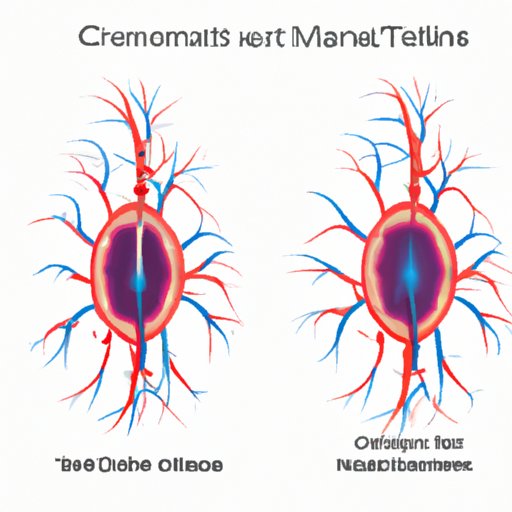
Introduction
Charcot-Marie-Tooth (CMT) disease, also known as hereditary motor and sensory neuropathy, is a rare genetic disorder that affects the peripheral nerves and results in muscle weakness and atrophy, as well as decreased sensation in the limbs. In this article, we will explore the history and science behind this disease, debunk common myths, and provide resources for patients and families.
The Surprising Medical History Behind Charcot-Marie-Tooth Disease
CMT disease is named after three prominent neurologists who contributed to its discovery: Jean-Martin Charcot, Pierre Marie, and Howard Henry Tooth. In the late 19th century, these doctors independently observed patients with similar neurological symptoms, and their collective findings led to the recognition of CMT as a distinct disease. They also recognized that it was hereditary, which was a major breakthrough in the field of neurology.
Their work laid the foundation for modern research into CMT. Today, researchers are still probing the underlying causes of the disease and developing new treatments.
Decoding Charcot-Marie-Tooth Disease
There are many different types of CMT disease, each with its own set of symptoms. However, some common symptoms include:
- Muscle weakness in the feet, legs, and hands
- Foot drop, where the foot is unable to flex upwards
- High arches or flat feet
- Numbness or tingling in the feet and hands
CMT disease occurs due to genetic mutations that cause damage to the peripheral nerves that connect the brain and spinal cord to muscles, skin and other organs. These nerves are responsible for controlling movement and sensation, so when they become damaged, the body experiences muscle weakness, atrophy and lack of sensation.
Diagnosis of CMT involves a neurological examination, nerve conduction studies, and genetic testing. While there is no cure for the disease, physical therapy, orthopedic devices, and surgeries can help manage symptoms and improve quality of life.
A Personal Journey with Charcot-Marie-Tooth Disease
Living with CMT disease can be challenging, but many individuals with the disease are able to thrive. To better understand what it is like to live with CMT, we spoke with a patient who shared their personal story.
“My journey with CMT began when I was a child. I had trouble walking, and my parents took me to the doctor. After several tests, I was diagnosed with CMT. As I got older, my symptoms worsened. I struggled with mobility and experienced frequent falls. Despite my difficulties, I was determined to live my life to the fullest. Today, I am an advocate for other patients with CMT, and I hope to inspire others to find joy and purpose in the face of this disease.”
Finding Clarity in the Murkiness
CMT disease is a complex disorder, and researchers have identified many different subtypes. Overall, there are four main types, which differ in their patterns of inheritance and the specific genetic mutations involved.
Type 1: This is the most common type of CMT, accounting for about 70% of all cases. It is inherited in an autosomal dominant pattern, which means that a person has a 50% chance of inheriting the disease if one parent has it.
Type 2: This type is also inherited in an autosomal dominant pattern, but it affects a different part of the peripheral nerves than type 1.
Type 3: This type is inherited in an autosomal recessive pattern, which means that an individual must inherit two copies of the mutated gene (one from each parent) to develop the disease.
Type 4: This type is also inherited in an autosomal recessive pattern, and it affects the Schwann cells that surround the peripheral nerves.
Genetics, Inheritance, and CMT
As mentioned earlier, CMT disease is caused by genetic mutations that affect the peripheral nerves. These mutations can be inherited from one or both parents, or they can occur spontaneously. While some patients with CMT have a family history of the disease, others are the first in their family to be diagnosed.
Understanding the genetics of CMT is important not only for diagnosis, but also for developing new treatments. Researchers are currently exploring various approaches, including gene therapy and stem cell therapy.
Debunking Common Myths Surrounding Charcot-Marie-Tooth Disease
Despite its relative rarity, CMT disease remains shrouded in myths and misconceptions. Two of the most common myths include:
Myth 1: CMT is contagious – CMT disease is not contagious, and it cannot be transmitted through contact with an infected individual.
Myth 2: CMT only affects the feet – While it is true that CMT often causes muscle weakness in the feet and legs, it can also affect the hands, arms, and other parts of the body.
It is important to dispel these myths and educate the public about the realities of living with CMT disease.
Supporting Those Living with CMT
Living with a rare disease like CMT can be isolating, but there are many resources available for patients and families. These include advocacy organizations, support groups, informational websites, and more. It is important for patients and families to know that they are not alone, and that there are many others who are experiencing similar challenges.
Conclusion
Charcot-Marie-Tooth disease is a complex disorder with a rich history and a promising future. While it can be challenging to live with, many patients with CMT find joy, meaning, and purpose in their lives. By understanding the science behind the disease, debunking myths, and providing support to those affected, we can help improve the lives of individuals with CMT and their families.




